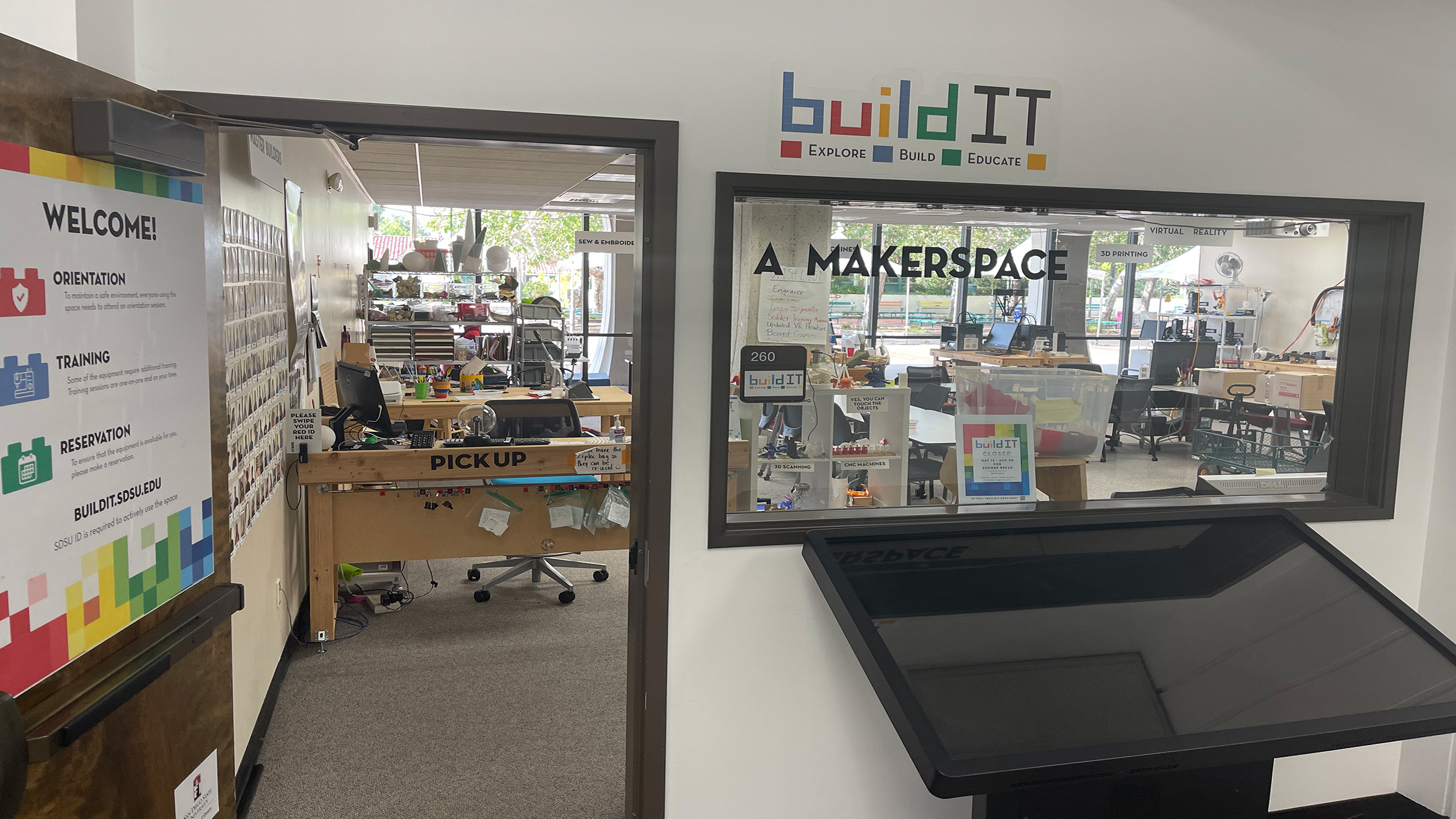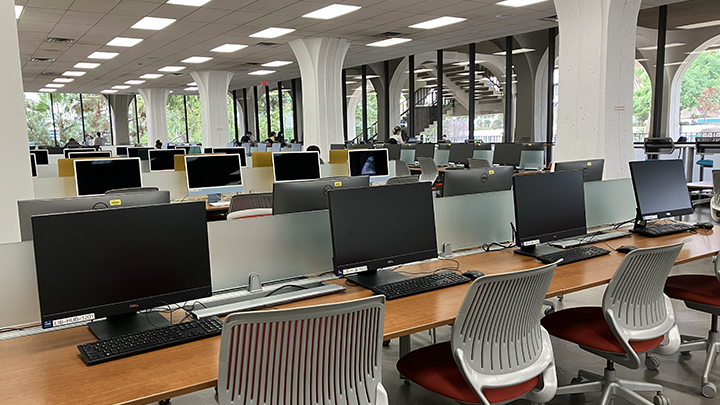Student Use Fee
Your Student Use Fees At Work
The Library Student Use Fee allows us to provide students with increased service hours, access to a greater array of digital content and services, plus information technology available in classrooms, public labs, and specialized service spaces including buildIT and the Digital Humanities Center. The fee also directly supports students through employment and internship opportunities.
What is the Library Student Use Fee?
The Library Student Use Fee of $10 per semester was established by student vote in 2002, and increased to $25 per semester following a similarly positive student vote in 2008.
Student Voices Matter
The Dean of the University Library meets regularly with student leaders, and subject specialist librarians are available to meet with student leaders in individual colleges. Through these advisory groups students can provide input on how Library Student Use Fee funds are used. Student voices have been important in the design and delivery of fee-funded initiatives such as enhancements to study space in the library. Student feedback was also critical to the design and delivery of library services during the coronavirus pandemic of 2020 - 21.
- Contact the Dean
- Contact a Subject Specialist Librarian
What Does the Student Use Fee Provide?

Fee funds are employed to enhance student access to library resources, services, and technology, and to improve library services and spaces. Routine uses for these fee funds include:
- Enhancements to information technology available in, or through, the library, including loanable technology, as well as innovative, technology-enhanced spaces such as buildIT and the Digital Humanities Center
- Additions to library collections, especially e-book collections
- Improvement to library spaces
- Wages for student assistants working throughout the library
- Salaries and wages for library staff and student assistants providing access to the library's After-Hours spaces, printing services, and Computer Hub

Fee funds also provide support for ongoing initiatives to enhance library spaces and services, and to make the library more open and inclusive to SDSU's diverse student body. Among the major initiatives supported by fee funding in recent years are the following:
For 20/21, the library allocated 36% of fee funds for purchase of electronic books and other electronic resources – an increase of $10,000 from previous years. These 400 new ebooks and 1,450 new streaming media resources are available to students regardless of their location or time of day, supporting student success during this period of primarily virtual learning. This is especially important when students are participating in SDSU classes and projects from around the world.
While the library has not been able to continue its robust student employment program in 20/21, we continue to employ a small number of students working remotely. These students have been assisting with the 24/7 librarian chat responses, answering circulation questions, providing computer support, creating social media, and working on database maintenance.
Prior to the March closure of the library buildings, we employed close to 100 students in a variety of roles, supported by student use fee funding. We look forward to restoring opportunities for student employment in the library in 21/22.
Funds from previous years have been dedicated to making library study spaces more conducive to learning with ergonomic furnishings and up-to-date equipment. We have also created exciting new spaces, such as the Digital Humanities Center, so students can explore new methods of collecting and sharing information.
Fee funds are often used for projects that take several years to plan and complete. An example is the creation and staffing of the After-Hours Study Area. Fee funds were used both to create the space and to pay for overnight security and after-hours staff to make the space a safe place to study.
Database subscriptions provide access to critical articles, book chapters, and other materials needed for learning and scholarship. Full-text databases and digital collections provide immediate access to thousands of articles and other materials that might otherwise be inaccessible, require additional time to access through interlibrary loan or document delivery, or an additional fee to view online. To better support the digital learning environment in 19/20 and 20/21, the library has dedicated additional fee funds to digital resources that can be accessed regardless of a user’s physical location.
For example, some of the fee funds pay for databases that support career readiness, such as Vault and IBISWorld. This expands the library’s resources on career discovery, finding internships and jobs, negotiating salary, preparing for an interview, and learning skills that will set students apart in the job market.
Fee funds allowed for the purchase and installation of lockers that allow students to use Domeside Pickup and retrieve books whenever it is convenient for them, similar to the lockers that Amazon and other large retailers have begun using. This project is in process and should be completed in Spring 2021.
Over the last several years, fee funds have been invested in creating new collaborative study rooms. Construction of new study spaces has continued during the building closures so that students will return to refreshed spaces without having to live with the noise and inconvenience of construction.
We are proud to be certified as a Sustainable Library!
Contact Us
From research to study spaces, we’ve got you covered.
